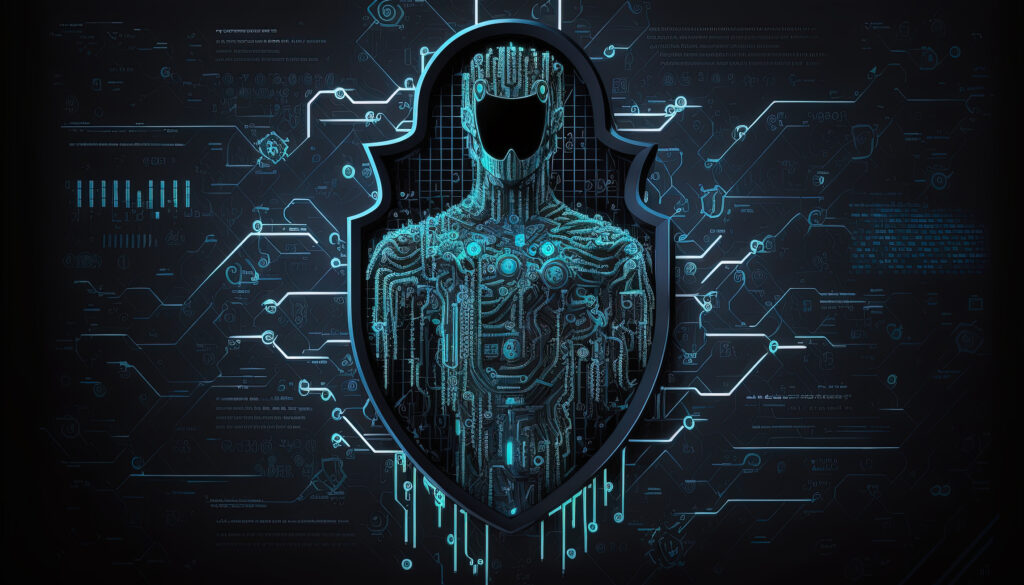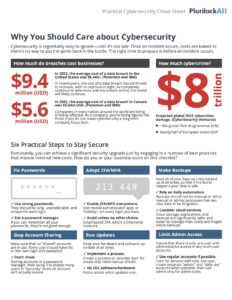In the ever-evolving landscape of cybersecurity, the “Identity Factor” stands out as a crucial element that often plays a pivotal role in securing digital environments. Identity, in the context of cybersecurity, refers to the unique attributes and credentials that distinguish one user, device, or entity from another within a system. This deep dive will explore what the Identity Factor is, why it matters in the realm of cybersecurity, and provide in-depth analysis on its importance.
Understanding the Identity Factor
Definition and Components
The Identity Factor encompasses a multifaceted set of attributes that collectively define and differentiate entities in a digital ecosystem. These attributes include:
- User Identity: Involves the identification and verification of individuals accessing a system, typically through usernames, passwords, biometrics, or multi-factor authentication.
- Device Identity: Focuses on recognizing and securing the devices connected to a network, ranging from traditional computers to Internet of Things (IoT) devices. This involves unique device identifiers and authentication protocols.
- Application and Service Identity: Encompasses the identity and access management associated with software applications and services, ensuring that only authorized entities can interact with them.
- Privileged Identity: Deals with the special permissions and access granted to certain users or entities, such as administrators or service accounts, requiring heightened security measures to prevent misuse.
- Data Identity: Involves the protection and control of data based on its sensitivity, ensuring that only authorized entities can access, modify, or transmit it.
Role of Identity in Authentication and Authorization
Authentication and authorization are two fundamental processes in cybersecurity that heavily rely on the Identity Factor:
- Authentication: This process verifies the identity of a user, device, or entity attempting to access a system. Strong authentication mechanisms, including multi-factor authentication, biometrics, and secure tokens, contribute to a robust defense against unauthorized access.
- Authorization: After authentication, the system determines the level of access or permissions the authenticated entity should have. Proper authorization mechanisms ensure that users or devices only have access to the resources and data they need for their designated tasks.
Why the Identity Factor Matters
Mitigation of Insider Threats
Insider threats, where malicious activities originate from within an organization, pose a significant risk to cybersecurity. The Identity Factor plays a pivotal role in mitigating these threats by enabling granular access controls, monitoring user behavior, and promptly identifying anomalies.
- Behavioral Analytics: The Identity Factor allows organizations to employ behavioral analytics to establish a baseline of normal user behavior. Deviations from this baseline can trigger alerts, helping detect and respond to potential insider threats.
- Access Controls: Through effective identity and access management (IAM) solutions, organizations can implement least privilege principles, ensuring that users and entities only have the minimum access necessary for their roles. This minimizes the potential damage caused by insider threats.
Strengthening Authentication
The rise of sophisticated cyber threats calls for robust authentication mechanisms. The Identity Factor contributes to strengthening authentication processes in various ways:
- Multi-Factor Authentication (MFA): Incorporating multiple factors, such as passwords, biometrics, and one-time codes, adds an extra layer of security to authentication. The Identity Factor enables the implementation of MFA, reducing the likelihood of unauthorized access.
- Biometric Authentication: Leveraging unique biological traits, such as fingerprints or facial recognition, enhances the reliability of user authentication. The Identity Factor ensures the secure integration of biometric data into authentication systems.
Regulatory Compliance
With the increasing focus on data protection and privacy regulations, the Identity Factor is instrumental in achieving and maintaining regulatory compliance. Regulations like the General Data Protection Regulation (GDPR) and the Health Insurance Portability and Accountability Act (HIPAA) mandate strict controls over user identities and access to sensitive data.
- User Consent and Control: The Identity Factor allows organizations to implement mechanisms for obtaining user consent and providing individuals with control over their personal data. This is particularly crucial for compliance with regulations that emphasize user rights.
- Audit Trails and Reporting: Identity and access management solutions facilitate the generation of detailed audit trails, documenting user activities and access. These audit trails are essential for compliance reporting and investigations in case of security incidents.
Countering Credential-based Attacks
Credential-based attacks, such as phishing and credential stuffing, remain prevalent threats. The Identity Factor plays a pivotal role in mitigating these risks:
- User Education and Awareness: By incorporating the Identity Factor, organizations can implement user education programs that raise awareness about phishing attacks and the importance of safeguarding credentials. This empowers users to recognize and resist social engineering attempts.
- Continuous Authentication: Implementing continuous authentication mechanisms monitors user behavior throughout a session, requiring re-authentication if suspicious activities are detected. This adds an additional layer of defense against unauthorized access using compromised credentials.
Safeguarding Against Account Takeovers
Account takeovers, where unauthorized entities gain control of user accounts, are a persistent concern. The Identity Factor contributes to preventing and mitigating account takeovers:
- Adaptive Authentication: By analyzing contextual factors such as device information, geolocation, and user behavior, adaptive authentication adapts the level of authentication required based on risk. The Identity Factor enables the integration of adaptive authentication measures to enhance security.
- Account Recovery Mechanisms: The Identity Factor is crucial in designing secure account recovery processes. Organizations can implement multi-step verification and verification through alternative communication channels to ensure legitimate account recovery without compromising security.
In-Depth Analysis of the Identity Factor’s Importance
Integration with Zero Trust Security
The concept of Zero Trust Security, where no entity is inherently trusted and verification is required from everyone, aligns closely with the principles of the Identity Factor. Zero Trust mandates continuous verification of identity and strict access controls, emphasizing the importance of identity in the overall security posture.
- Micro-Segmentation: The Identity Factor enables organizations to implement micro-segmentation by defining access policies based on user identities. This granular control limits lateral movement within a network, reducing the potential impact of a security breach.
- Dynamic Access Policies: Integrating the Identity Factor with Zero Trust allows for dynamic access policies that adapt based on real-time risk assessments. This ensures that access is granted or restricted dynamically, considering the context of the user and the environment.
Evolving Threat Landscape and Adaptive Security
The dynamic and evolving nature of cyber threats requires a proactive and adaptive security approach. The Identity Factor contributes to adaptive security measures that respond to emerging threats:
- Machine Learning and AI Integration: Identity-based security solutions leverage machine learning and artificial intelligence to analyze user behavior and detect anomalies. These technologies enhance the ability to identify and respond to emerging threats in real time.
- Threat Intelligence Integration: Integrating threat intelligence with the Identity Factor allows organizations to stay informed about the latest cyber threats and adjust their security policies accordingly. This proactive approach enhances overall cybersecurity resilience.
Cloud and Hybrid Environments
As organizations increasingly migrate to cloud and adopt hybrid environments, the Identity Factor becomes integral to ensuring secure access and data protection:
- Single Sign-On (SSO): The Identity Factor facilitates the implementation of Single Sign-On solutions, allowing users to access multiple applications with a single set of credentials. This not only enhances user experience but also streamlines identity management in cloud and hybrid environments.
- Identity Federation: Federating identities across different systems and platforms ensures consistent and secure authentication. The Identity Factor enables organizations to establish trust relationships between identity providers, enhancing security in distributed environments.
Human-Centric Security
Recognizing the human element in cybersecurity is crucial, and the Identity Factor plays a central role in human-centric security approaches:
- User-Centric Design: Incorporating the Identity Factor into user-centric design ensures that security measures are user-friendly and do not hinder productivity. This approach encourages user compliance with security policies and reduces the likelihood of circumvention.
- Privacy by Design: The Identity Factor aligns with the principle of privacy by design, emphasizing the integration of privacy considerations into the development of systems. This approach ensures that identity management processes prioritize user privacy and comply with data protection regulations.
Conclusion
The Identity Factor is undeniably a cornerstone in the realm of cybersecurity, influencing authentication, authorization, and access controls. Its multifaceted nature addresses challenges posed by insider threats, credential-based attacks, and regulatory compliance. Moreover, the Identity Factor aligns seamlessly with emerging security paradigms such as Zero Trust, adaptive security, and human-centric design.
As the cybersecurity landscape continues to evolve, organizations must recognize the pivotal role of the Identity Factor in building resilient and adaptive security frameworks. By prioritizing identity management, organizations can enhance their ability to counteract emerging threats, safeguard sensitive data, and create a robust defense against cyber adversaries. The integration of the Identity Factor is not just a security measure; it is a strategic imperative in the digital age.














